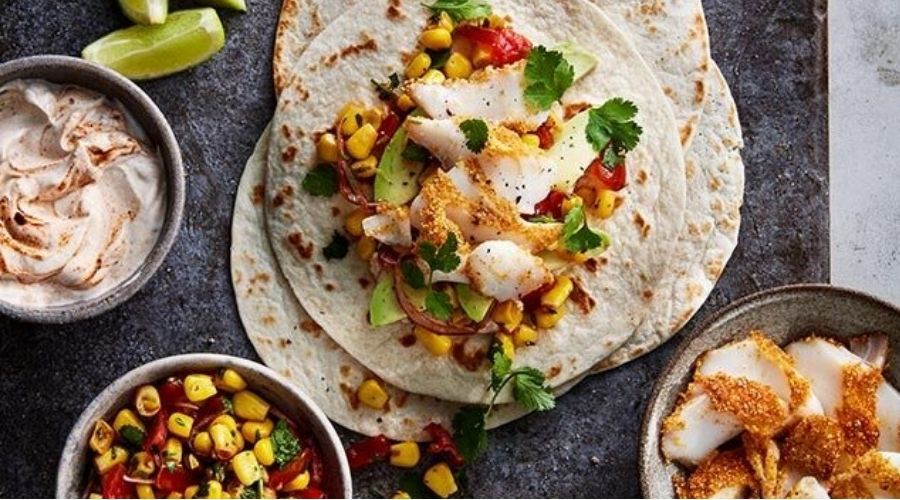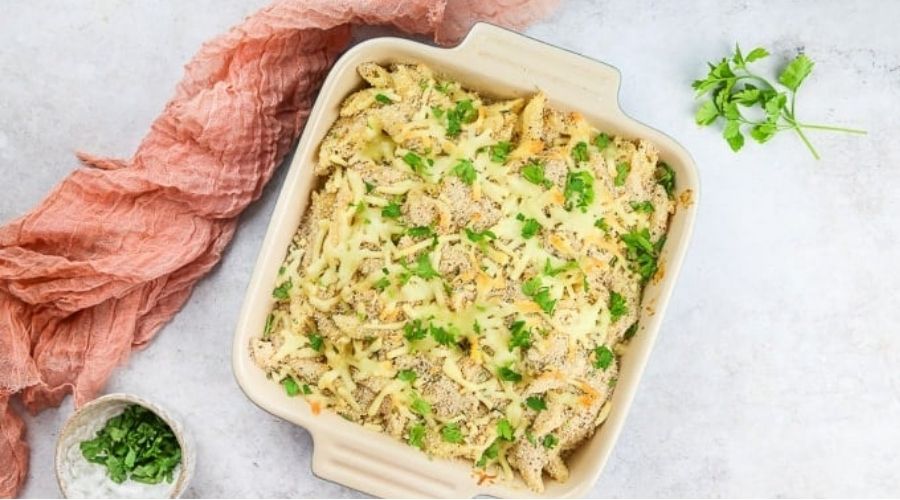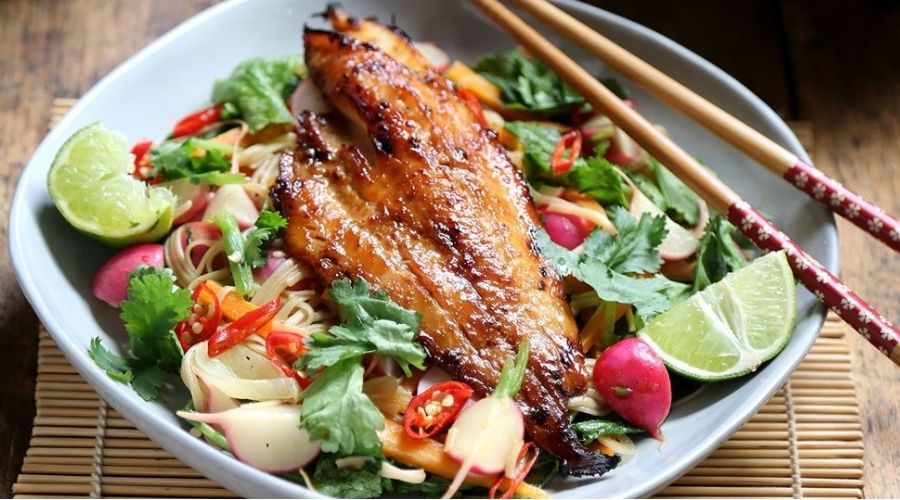Leftover baked haddock is often a delightful find in your fridge, but it can also leave you wondering what to do next.
Instead of letting it languish and risk going to waste, why not explore the many creative ways to repurpose this flavorful fish?
Whether you’re in the mood for a light salad, a hearty chowder, or even a fun taco night, there are countless options to ensure every bite of your baked haddock is enjoyed.
In this article, we’ll delve into delicious ideas and recipes that transform your leftovers into exciting meals, helping you minimize waste and elevate your dining experience.
What to Do with Leftover Baked Haddock: Creative Recipes and Ideas
Transforming leftover baked haddock into new and enticing dishes not only reduces food waste but also adds variety to your meals.
From flavorful tacos to comforting casseroles, the possibilities are endless when it comes to using this versatile fish.
By embracing your culinary creativity, you can savor the taste of your baked haddock long after it has cooled.
So, the next time you find yourself with leftover haddock, remember these innovative ideas to turn it into something special.
With a little imagination, you can create delightful meals that celebrate the deliciousness of your original dish while ensuring nothing goes to waste.
Make Haddock Tacos

Leftover baked haddock can be transformed into flavorful tacos, providing a fun and delicious way to repurpose your fish.
This option is appealing because it adds a zesty twist to your meal, and it’s easy to customize with your favorite toppings.
Simply flake the haddock and warm it up in a skillet with some taco seasoning or spices of your choice.
Caution is necessary to avoid overcooking the fish, as it can dry out quickly.
Serve the seasoned haddock in soft tortillas and top with fresh ingredients like cabbage, avocado, salsa, or a squeeze of lime.
These tacos not only make for a quick dinner but can also be a great option for entertaining guests.
Prepare a Haddock Salad
Creating a haddock salad is an excellent way to enjoy leftover baked fish while adding freshness to your meal.
This option is appealing because it combines protein with a variety of crunchy vegetables, making it both satisfying and healthy.
Simply flake the baked haddock into a bowl and mix it with ingredients like chopped lettuce, tomatoes, cucumbers, and bell peppers.
For added flavor, drizzle with a light vinaigrette or a creamy dressing.
Caution should be taken not to overpower the delicate flavor of the haddock; a light hand with the dressing works best.
This salad can be served as a main dish or as a side, and it’s a fantastic way to incorporate more vegetables into your diet.
Make a Haddock Chowder
Leftover baked haddock can be transformed into a comforting chowder, perfect for a cozy meal.
This option is appealing because it allows you to create a warm and hearty dish that’s full of flavor.
Start by sautéing onions, garlic, and celery in a pot, then add diced potatoes and enough broth to cover.
Once the potatoes are tender, add the flaked haddock along with cream or milk, and season to taste with herbs like dill or thyme.
Caution is necessary to avoid boiling the chowder after adding the cream, as this can cause it to curdle.
This chowder can be served with crusty bread and is a delightful way to enjoy your leftover fish while warming up on a chilly day.
Prepare Haddock Stuffed Peppers
Transforming leftover baked haddock into stuffed peppers is a creative and nutritious option.
This dish is appealing because it combines the flavors of the fish with rice or quinoa, vegetables, and spices, all baked in a colorful pepper.
To make them, combine flaked haddock with cooked rice, chopped vegetables, and your choice of seasonings.
Stuff the mixture into halved bell peppers and bake until the peppers are tender.
Caution is important to avoid overcooking the peppers; you want them to retain some firmness.
This dish is not only visually appealing but also makes for a complete meal, offering a balanced combination of protein, carbohydrates, and vitamins.
Plus, it’s a great way to use up other leftover ingredients you may have on hand!
Create a Haddock Pasta Bake

Leftover baked haddock can be used to make a delicious pasta bake, turning simple ingredients into a comforting dish.
This option is appealing because it combines the flaky fish with pasta, cheese, and a creamy sauce, creating a hearty meal that the whole family will love.
To prepare, cook your favorite pasta and mix it with a creamy sauce, then gently fold in the flaked haddock and some vegetables, like spinach or peas.
Transfer the mixture to a baking dish, top with cheese, and bake until golden and bubbly.
Caution is necessary to ensure the haddock is not overcooked, which could lead to a dry texture.
This pasta bake is perfect for meal prep, as it can be enjoyed as leftovers throughout the week.
Make Haddock Fish Cakes
Turning leftover baked haddock into fish cakes is a fantastic way to create a flavorful dish that can be served as an appetizer or main course.
This option is appealing because it allows you to combine the fish with ingredients like potatoes, breadcrumbs, and herbs, resulting in a crispy exterior and a tender interior.
To prepare, mash some cooked potatoes and mix them with flaked haddock, diced onions, and seasonings. Form the mixture into patties and pan-fry until golden brown on both sides.
Caution should be taken when flipping the cakes to prevent them from breaking apart.
These fish cakes can be served with a side of tartar sauce or a fresh salad, making for a versatile meal.
Prepare a Haddock Omelette
Leftover baked haddock can be incorporated into a flavorful omelette, providing a quick and nutritious meal option.
This is appealing because it allows you to enjoy the rich flavors of the fish while adding protein and vegetables.
To create the omelette, whisk eggs and pour them into a heated skillet.
Once the edges start to set, add flaked haddock and any desired vegetables, such as bell peppers or spinach.
Caution is necessary not to overfill the omelette, as this can make it difficult to fold. Cook until the eggs are set and the omelette is cooked through.
This dish is perfect for breakfast, brunch, or a light dinner, and it can be easily customized based on what you have on hand.
Make a Haddock Quiche
Transforming leftover baked haddock into a quiche is a delightful way to enjoy the fish in a rich, savory dish.
This option is appealing because it combines the haddock with eggs, cheese, and vegetables, all baked in a flaky crust.
To prepare, whisk together eggs and cream, then add flaked haddock, sautéed onions, and cheese. Pour the mixture into a pie crust and bake until set and golden.
Caution is necessary to ensure the quiche is cooked through; you can check for doneness by inserting a knife into the center; it should come out clean.
This quiche can be served warm or cold and makes for an excellent option for brunch, picnics, or meal prep throughout the week.
Create a Haddock Stir-Fry

Leftover baked haddock can be quickly transformed into a flavorful stir-fry, making for a fast and healthy meal option.
This method is appealing because it allows you to incorporate a variety of fresh vegetables and sauces, creating a colorful and nutritious dish.
To prepare, flake the haddock and sauté it in a hot skillet with a mix of your favorite vegetables, such as bell peppers, broccoli, and snap peas.
Add some soy sauce or teriyaki sauce for flavor, and cook just until everything is heated through.
Caution is needed to avoid overcooking the fish, as it can become dry and tough. Serve the stir-fry over rice or noodles for a satisfying meal that can be made in under 30 minutes.
Make Haddock Casserole
Using leftover baked haddock in a casserole is a hearty way to enjoy your fish.
This option is appealing because it combines the haddock with grains, vegetables, and a creamy sauce, creating a comforting and filling dish.
To prepare, mix flaked haddock with cooked rice or quinoa, a variety of vegetables, and a creamy sauce (like cream of mushroom or a homemade cheese sauce).
Transfer the mixture to a baking dish, top with breadcrumbs or cheese, and bake until bubbly and golden.
Caution is important to ensure the casserole is heated through without overcooking the fish.
This dish is perfect for family dinners and can easily be made in advance.
Prepare Haddock Stuffed Avocados
Transforming leftover baked haddock into stuffed avocados is a fresh and healthy option that’s packed with flavor.
This is appealing because it pairs the rich taste of the fish with the creaminess of avocado, creating a satisfying meal.
To make this dish, simply scoop out some of the flesh from halved avocados and mix it with flaked haddock, diced tomatoes, onions, and a squeeze of lime juice.
Caution is necessary to handle the avocados gently, as they can bruise easily.
Serve the stuffed avocados as a light lunch or appetizer, and enjoy the vibrant combination of flavors and textures.
Create a Haddock Dip
Leftover baked haddock can be transformed into a savory dip, making for a perfect appetizer for parties or gatherings.
This option is appealing because it’s easy to prepare and pairs wonderfully with crackers, chips, or fresh vegetables.
To make the dip, combine flaked haddock with cream cheese, sour cream, lemon juice, and your choice of herbs and spices (like dill or paprika).
Blend until smooth, or leave it slightly chunky for texture.
Caution is important to ensure the dip is well-balanced; taste as you go to avoid overpowering the delicate flavor of the haddock.
Serve the dip chilled and enjoy the delicious, savory flavors that are sure to be a hit at any gathering!
How to Store/Freeze Leftover Baked Haddock
Storing and freezing leftover baked haddock properly is essential to maintain its freshness, flavor, and texture.
When handled correctly, you can enjoy your baked haddock days or even weeks later without losing quality.
By following a few simple guidelines, you can ensure that your fish remains safe to eat while preserving its delicious taste.
Whether you plan to consume it soon or save it for future meals, knowing how to store and freeze your haddock will help you minimize waste and make the most of your leftovers.
Step-by-Step Guide
- Cool Down: Allow the baked haddock to cool completely at room temperature. This step is crucial as placing hot food directly into storage can lead to condensation, which can cause spoilage.
- Wrap Properly: Once cooled, wrap the haddock tightly in plastic wrap or aluminum foil to minimize exposure to air, which can lead to freezer burn. Alternatively, you can place the fish in an airtight container.
- Label and Date: If using a container or a freezer bag, label it with the date and contents. This will help you keep track of how long the haddock has been stored and ensure you use it within a safe time frame.
- Freezing: For long-term storage, place the wrapped haddock in the freezer. Baked haddock can be frozen for up to three months while retaining its quality.
- Thawing: When you’re ready to enjoy your frozen haddock, transfer it to the refrigerator to thaw overnight. For quicker thawing, you can place the wrapped fish in a bowl of cold water for a few hours. Avoid thawing in the microwave, as it can lead to uneven heating and compromise the texture.
- Reheating: After thawing, you can reheat the haddock in the oven, on the stovetop, or in the microwave. For best results, reheat it gently at a low temperature to prevent drying out. You can add a splash of water or a drizzle of olive oil before reheating to help retain moisture.
Properly storing and freezing leftover baked haddock is vital for ensuring that you can enjoy this flavorful fish at a later date without compromising its taste or safety.
By cooling the fish completely, wrapping it securely, and labeling it accurately, you can minimize waste and maintain quality.
When you’re ready to use your frozen haddock, following the correct thawing and reheating methods will help you achieve a delicious meal reminiscent of its freshly baked state.
Embracing these storage techniques not only enhances your culinary experience but also allows you to make the most of your kitchen efforts, ensuring that every bite of your delicious baked haddock is savored to the fullest.
1. Can I reheat leftover baked haddock?
Yes, you can reheat leftover baked haddock. To maintain its texture and flavor, it’s best to reheat it gently in the oven at a low temperature.
You can also warm it on the stovetop with a splash of broth or oil to keep it moist. Avoid using the microwave, as it can dry out the fish and lead to uneven heating.
2. How long can I store leftover baked haddock in the fridge?
Leftover baked haddock can be stored in the refrigerator for about 3 to 4 days.
Make sure it is placed in an airtight container to minimize exposure to air and moisture, which can affect its quality.
3. What are some creative ways to use leftover baked haddock?
There are many delicious ways to use leftover baked haddock! You can make haddock tacos, stir-fries, salads, or even a creamy chowder.
Transforming it into fish cakes or stuffing avocados with it are also great options for a unique meal.
4. Can I freeze leftover baked haddock?
Yes, you can freeze leftover baked haddock for up to three months. Make sure to wrap it tightly in plastic wrap or aluminum foil, or place it in an airtight container before freezing to prevent freezer burn and maintain its quality.
5. How can I tell if leftover baked haddock has gone bad?
If leftover baked haddock shows signs of spoilage, such as an off smell, a slimy texture, or discoloration, it’s best to discard it.
Always trust your senses; if it doesn’t look or smell right, it’s safer to err on the side of caution and throw it away.
References
- https://cookpad.com/us/search/fish%20left%20over%20recipe
- https://foodprint.org/blog/how-to-use-up-leftover-fish/
- https://thebigmansworld.com/baked-haddock/
- https://www.recipewinners.com/delicious-fish-cakes-from-leftovers/
- https://www.tasteasyougo.com/2010/10/how-to-reheat-leftover-fish.html


